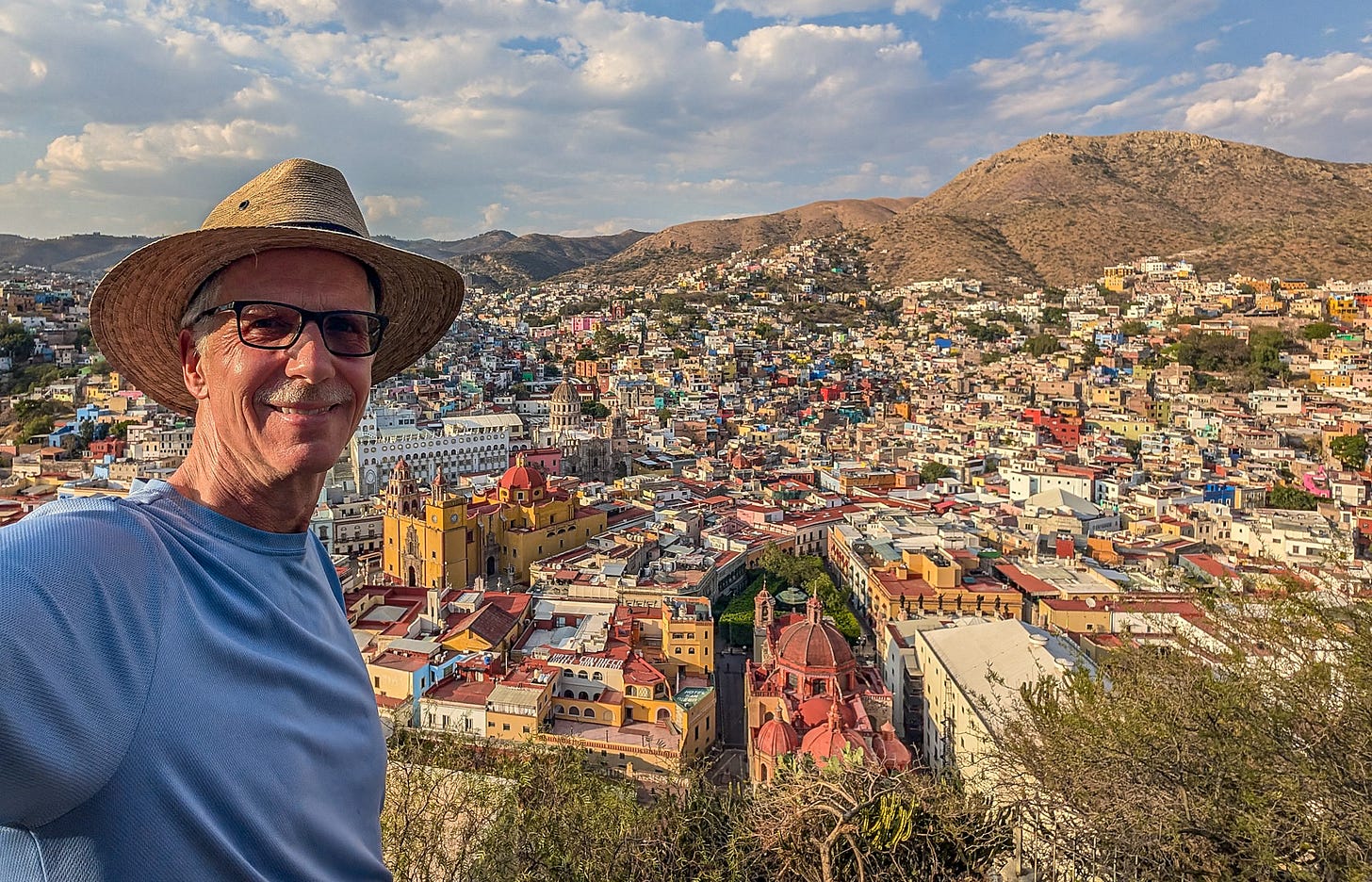Daytrip: Guanajuato, Mexico — the Most Colorful City in a Very Colorful Country
Everyone said we should go. Did it live up to our expectations?
This is a regular feature about “daytrips” — daytrips or weekend getaways — we’ve taken while living in different places around the world. If it’s featured here, that means we loved it!
Welcome to “Daytrip,” a new feature profiling interesting “nearby” places we’ve visited while staying longer-term in different destinations around the world.
Up first: Guanajuato, Mexico!
Why We Went There 🧳 🗺️ 🤔
We’re currently in San Miguel de Allende, Mexico, and before arriving here, neither of us had heard of Guanajuato, which is about 55 kilometers away.
Right away, folks started telling us we had to go.
And sure enough, we learned Guanajuato had been a UNESCO World Heritage Site since 1988; San Miguel de Allende didn’t get that listing until 2008.
Several folks also said we should’ve chosen to live there instead of San Miguel because it was more “authentic.”
Naturally, that piqued our curiosity.
As a photographer, I was also intrigued because I’d heard Guanajuato is considered Mexico’s most “colorful” city: full of bright, distinctively painted buildings — and its location in a valley supposedly made those buildings look even more dramatic.
Meanwhile, Brent was immediately all in when he learned about the town’s bizarre collection of “mummies” exhumed from a local cemetery — and also a strange network of tunnels underneath the city.
The tunnels were the result of the city’s location in that narrow valley, which made it prone to terrible flash floods. After a series of floods almost wiped out the city, massive tunnels were dug to divert the water.
Later, the construction of a dam eliminated the need for flood control, and the tunnels were converted into roads now used by both cars and people.
The Guanajuato Quickstart 🏃♂️🚀⚡
“Guanajuato” is both a city and the capital of the state of Guanajuato. That means technically the town is Guanajuato, Guanajuato, which is — forgive me for saying so — kind of confusing.
But most of the time, when you hear someone mention Guanajuato — pronounced “Gwah-nah-WAH-toh” — they’ll be referring to the city.
Guanajuato (the city) is also commonly abbreviated “GTO,” much like “SMA” is used to refer to San Miguel de Allende.
The area was home to lots of mineral deposits, especially silver, which first drew indigenous tribes, including the Aztecs. In the 1540s, the Spanish set up forts to wrest control from the indigenous peoples — and then established Guanajuato as an official town in 1548.
There was so much silver in the nearby mountains that the Valenciana Mine alone accounted for two-thirds of all the silver the Spanish hauled back to Spain during the nearly 300 years they controlled Mexico.
Today, Guanajuato has a population of 200,000, including 30,000 students attending the University of Guanajuato.
What We Did 🏰🎭🚶♂️📸
Brent and I made the trip with our friend Claire (who writes Wonder, Wander, Write) and her husband Daniel, and upon arrival, we all soon realized that while GTO and SMA have about the same population, this town feels smaller — because so much of the city is squeezed into that narrow valley (and also maybe because there are so many students).
However, this also makes it easier to explore the city’s offerings. You could see a lot of it in a day, but we decided there was enough to do to spend two nights and three days.
At Brent’s insistence, one of our top priorities was the Museo de las Momias, or Mummy Museum ($7.50 USD). It’s a collection of 111 bodies exhumed from a local cemetery between 1861 and 2002, when families could no longer afford the required burial tax.
So much for perpetual care, amirite?
The bodies were mummified because of the area’s very arid climate and the naturally salty soil. Most are even still dressed in the now-ratty clothes they were buried in.
Today, the museum is the number one attraction for Mexican tourists visiting Guanajuato — maybe not surprisingly, since it fits pretty seamlessly into the country’s “Day of the Dead” traditions and general fascination with dead ancestors.
Brent loved it: the mummies, which are genuinely fascinating in their own right, but also the kitschy businesses surrounding the museum. It’s treated exactly like the major tourist attraction it is. There’s even a cheeky haunted house connected to the museum using actual bones from the graves!
That kind of irreverence would never fly in America — we have different irreverencies! — and Brent was enthralled by the very obvious cultural differences.
As for me, seeing all those actual dead bodies — including children and babies! — gave me the heebie-jeebies. Claire and Daniel also had no interest in visiting. If you’re at all squeamish, you should probably give this a pass.
Keep reading with a 7-day free trial
Subscribe to Brent and Michael Are Going Places to keep reading this post and get 7 days of free access to the full post archives.







